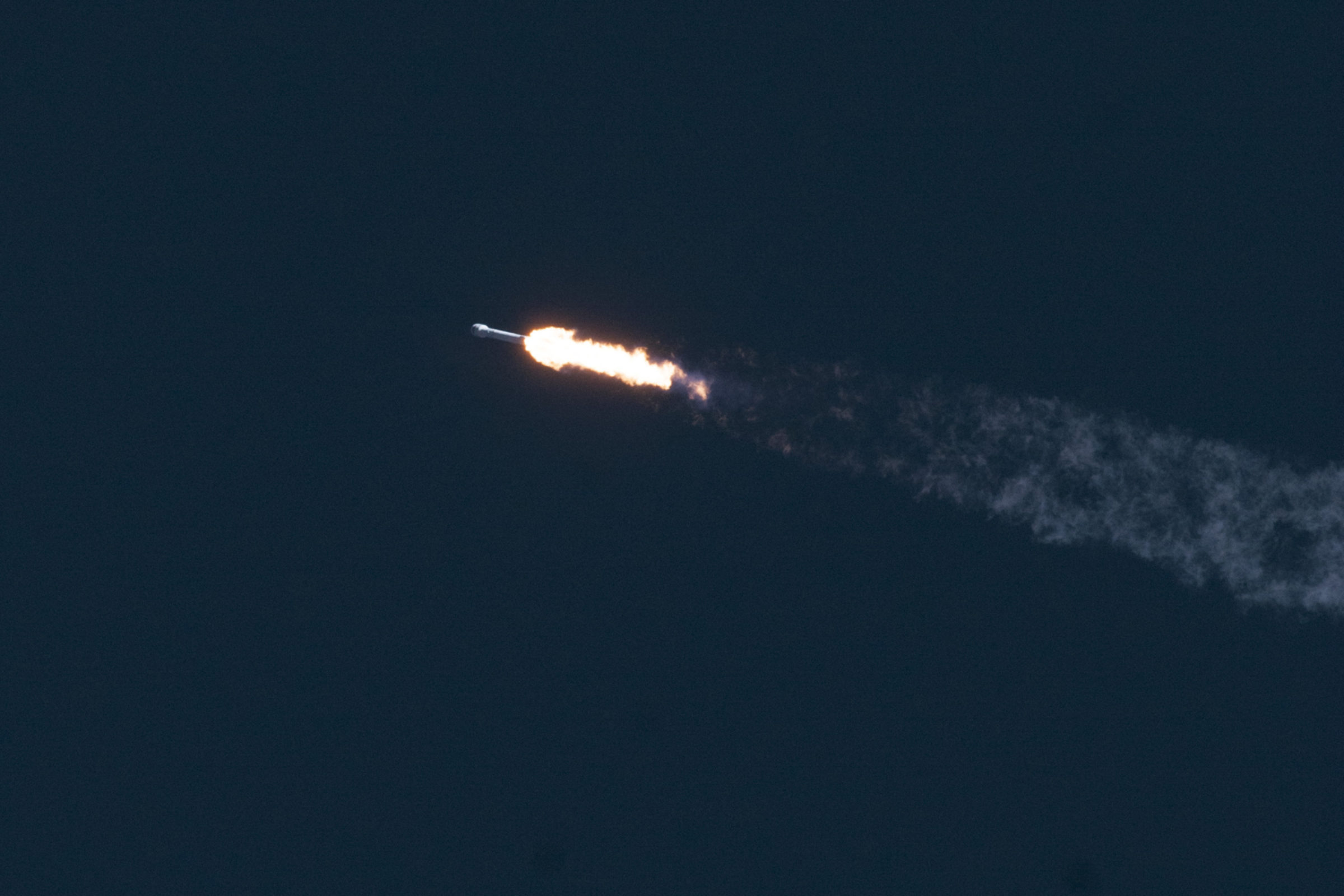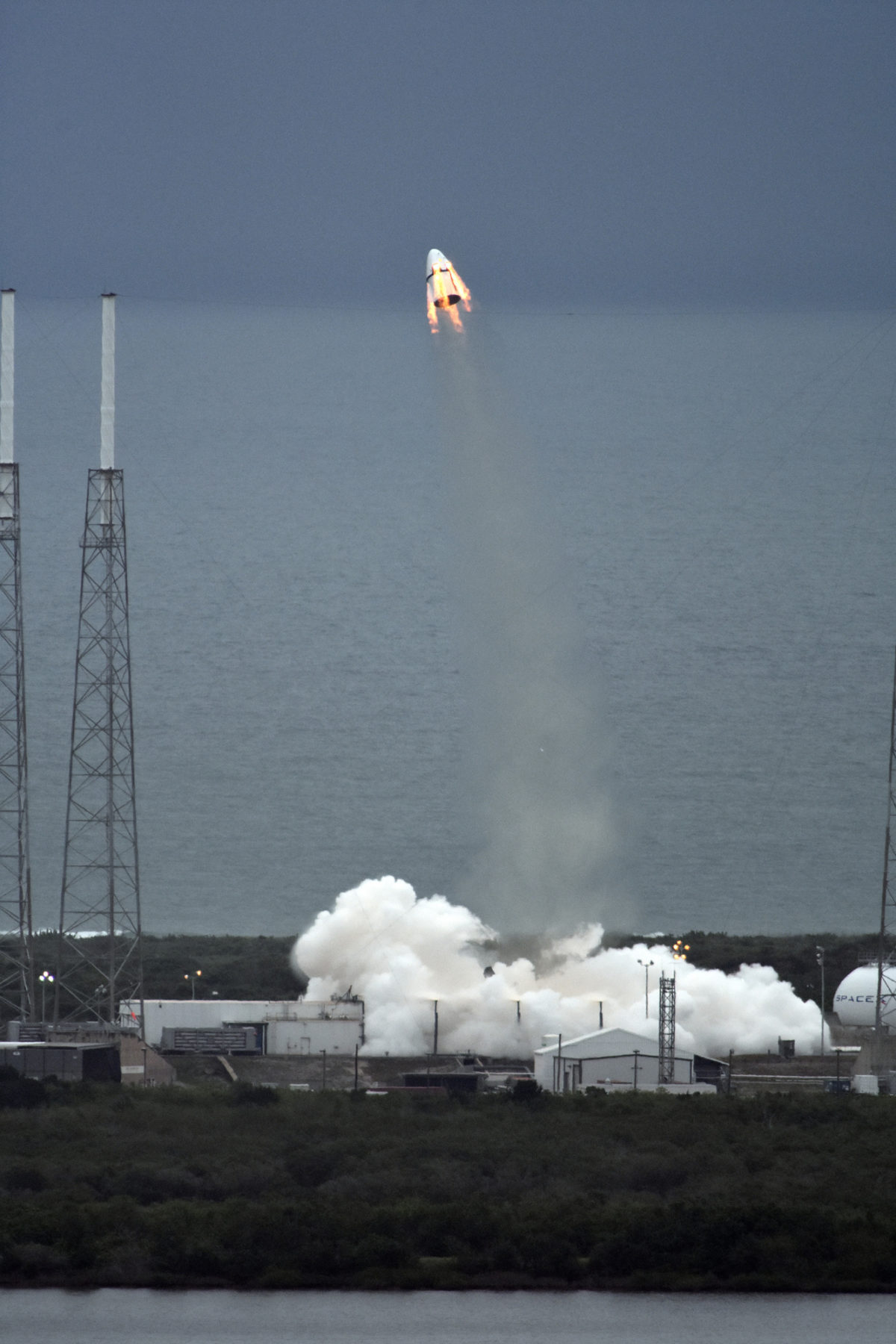Jason Davis • Jan 10, 2017
SpaceX is ready to fly rockets again. An expert talks about the reason a Falcon 9 blew up last year
On September 1, 2016, a Falcon 9 rocket inexplicably exploded on the launch pad during preparations for an engine test at Cape Canaveral, Florida. It was the second loss of a Falcon 9 in 15 months; the first occurred during a cargo flight to the International Space Station in June 2015.
The 2015 accident put SpaceX out of commission for six months. This time, the delay was a little shorter, at four months. SpaceX says they figured out why their rocket blew up last year, and that they know how to keep it from happening again. The company is now ready to launch a fleet of 10 communications satellites from Vandenberg Air Force Base; liftoff was supposed to have happened yesterday, before lousy weather forecasts and range conflicts pushed the mission back to Saturday, Jan. 14.
All of the information available about last year's accident comes from a series of updates posted to SpaceX's website, and the occasional tweet from either the company or its CEO, Elon Musk.
To get a deeper understanding of what happened, I spoke with an independent expert about the problem. The technical nitty-gritty is fascinating, and provides a glimpse into why SpaceX has been so successful. The company continually pushes the technological envelope in ways other firms do not, even if that means creating an occasional jaw-dropping fireball in the process. But how will that risk-reward equation change when astronauts start boarding Falcon 9 rockets?

Last year's accident
Like the 2015 accident, last year's pad explosion was traced to high-pressure helium bottles inside the rocket's upper stage liquid oxygen tank. Liquid oxygen tanks are pressurized with an inert gas like helium. In SpaceX's case, the helium bottles are stored inside the oxygen tank. This isn't uncommon; the mighty Saturn V moon rocket, for instance, used this configuration.
In 2015, SpaceX said a strut securing one of the helium bottles broke, rupturing the bottle and the oxygen tank. During last year's accident, the company believes a pocket of liquid, or possibly solid, oxygen trapped against one of the helium bottles ignited, blowing up the bottle and liquid oxygen tank. (Technically, liquid oxygen isn't flammable, but it makes everything else around it ultra-flammable.)
Pushing boundaries: Composite tanks and chilly oxygen
SpaceX's helium bottles aren't made of a single, solid material like aluminum. Instead, a thin layer of aluminum—which helium can't pass through—is used as an inner lining. To keep the thin aluminum from bursting under pressure, it is wrapped with tiny strands of carbon fiber. This design is called a Composite Overwrapped Pressure Vessel, or COPV.
COPVs are much lighter than their solid metal counterparts. That makes them attractive for space applications, where every bit of mass matters. On rockets, COPVs commonly hold gases used to open and close propellant valves, among other things. A space shuttle orbiter, according to one NASA document, had up to 24 COPVs staggered throughout the vehicle.
It took quite a bit of searching to find a third-party COPV expert, and when I did find her, she agreed to speak only on the condition of anonymity. I'll call her Lindy—she currently works with pressurized systems for a major launch vehicle manufacturer, and was formerly employed by an aerospace COPV supplier.
Lindy is a big fan of COPVs. But she said most rocket manufacturers stick with all-metal designs when they dunk their helium tanks in liquid oxygen. I asked her if she was aware of any company besides SpaceX that uses COPVs in this configuration.
"Not that I'm aware of," she said.
Oxygen liquefies between -183 and -219 degrees Celsius. These cold temperatures cause the tank and everything inside it to shrink. This can be especially troublesome near what Lindy called "interfaces"—places where the helium tank is physically secured to the oxygen tank. In order to make sure everything shrinks at about the same rate, most rocket manufacturers use the same material for both the helium and liquid oxygen tanks.
The environment inside a rocket's liquid oxygen is pretty harsh. In a Falcon 9 tank, it's even harsher—ever since the company began using superchilled liquid oxygen. The colder your liquid oxygen, the denser it gets, meaning you can squeeze more of it into your propellant tanks and increase the performance of your engines. But supercool liquid oxygen can be finicky—for starters, it has to be loaded a lot closer to liftoff time so it won't have a chance to warm up. George Sowers, the vice president for advanced technologies at United Launch Alliance, said his company doesn't bother: "not worth the trouble, small gain for lots of headaches," he tweeted last year.

The cause and the fix
After last year's pad explosion, SpaceX recovered some helium COPVs that weren't part of the accident. The tanks' inner aluminum liner was buckled in places, leaving gaps between the liner and carbon fiber overwrap. SpaceX did not speculate on why the liner buckled.
"Thermal issues seem to be a part of it," Lindy said, noting she could only draw on publicly available information. "The aluminum may have shrunk more than expected relative to the carbon overwrap. Its CTE (coefficient of thermal expansion) is much lower than aluminum. I mean, it's not even in the same ballpark."
According to SpaceX, supercool liquid oxygen may have seeped into the gaps that formed between the two liners. Helium doesn't liquify until -269 degrees Celsius—just four degrees warmer than absolute zero. That means the gaseous helium inside the COPV could have chilled the liquid oxygen trapped in the liner gaps even further—enough to solidify it, which occurs at -219 degrees Celsius.
At that point, SpaceX believes either friction or the snapping of a carbon fiber strand near the gap started the explosion that destroyed the rocket. Lindy told me she thought the explanation was credible—it doesn't take much to start a catastrophic conflagration in a liquid oxygen environment. And SpaceX said tests showed the colder the oxygen, the more likely this scenario was to occur.
"I think the general concept is feasible," she said. "The explanation, for me, is a bit simplistic, but an engineer is always going to say that."
SpaceX says they'll be using warmer helium from now on, in a "prior flight proven configuration based on operations used in over 700 successful COPV loads." (The company did not say when—or why—the configuration was changed out of the prior flight proven configuration.)
In the long run, SpaceX plans to fix the buckling issue altogether, though Lindy said this could be challenging.
"COPVs are a bit on the delicate flower side, is how I put it," she said. "Their care and feeding is not simple."
Risk versus reward
SpaceX is a private company backed by a billionaire and other investors. It succeeds precisely because it pushes the boundaries of rocket science. In the process, it has placed the entire launch industry on notice: Innovate and lower costs, or risk getting left behind.
When SpaceX sacrifices a rocket in the process, it has to answer to a much smaller group of stakeholders than organizations like NASA (which answers to American taxpayers) or United Launch Alliance (which answers to its parent companies, publicly traded Boeing and Lockheed Martin, both of which have wider aerospace interests).
By the time SpaceX starts shipping astronauts to the International Space Station, the company says it will have finished making major design changes to the Falcon 9. That's good news for astronauts that will entrust their lives to the launch vehicle. And even if an accident does occur, it would hardly be unprecedented; NASA lost 14 people in two space shuttle accidents because of bad bureaucratic choices.
In NASA's case, reminders of the two accidents are prominently posted at the agency's human spaceflight facilities. Placards at the Michoud Assembly Facility and Kennedy Space Center Vehicle Assembly Building remind workers that lives are literally on the line when rockets are being assembled and stacked.
Right now, only profit is at risk when SpaceX bolts a vehicle together. But that will soon change. When it does, will SpaceX's risk-reward equation look any different?
Support our core enterprises
Your support powers our mission to explore worlds, find life, and defend Earth. You make all the difference when you make a gift. Give today!
Donate

 Explore Worlds
Explore Worlds Find Life
Find Life Defend Earth
Defend Earth

